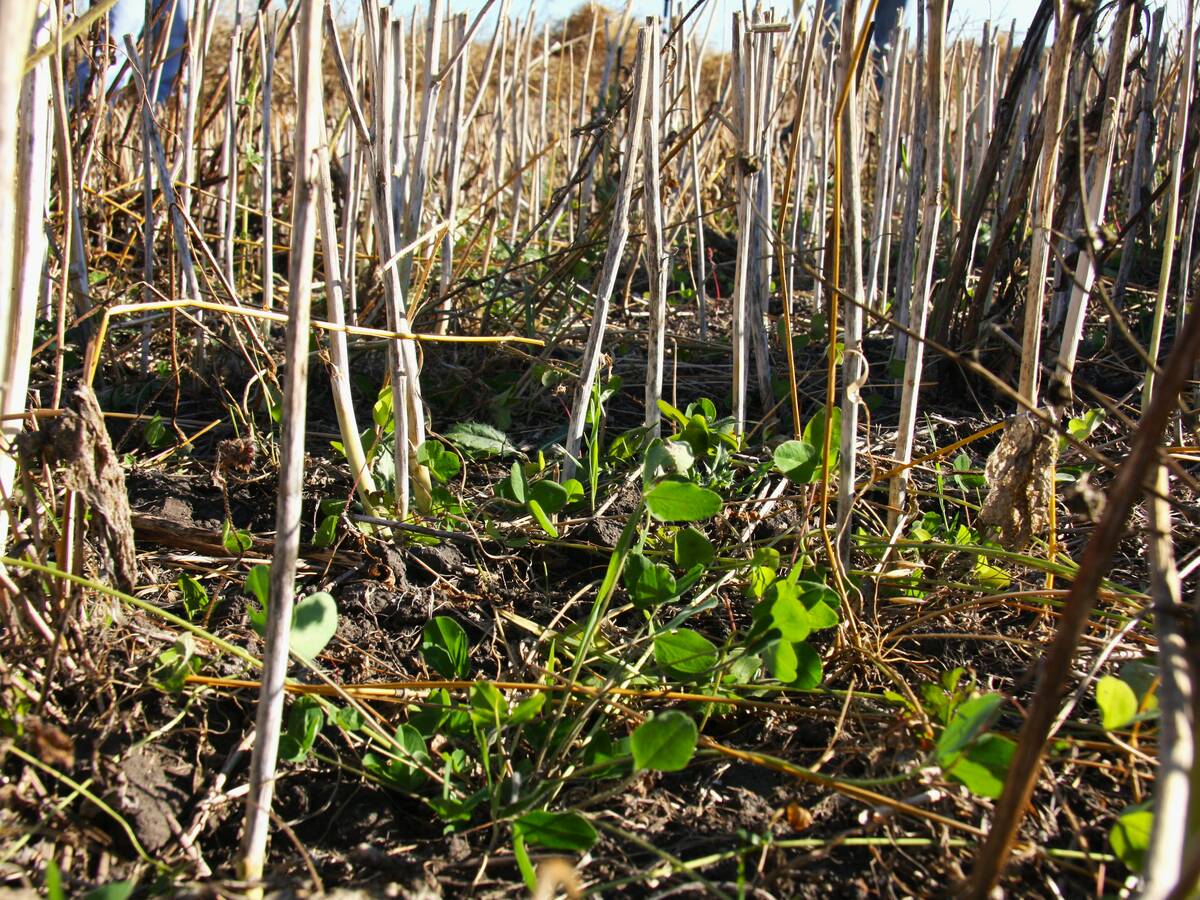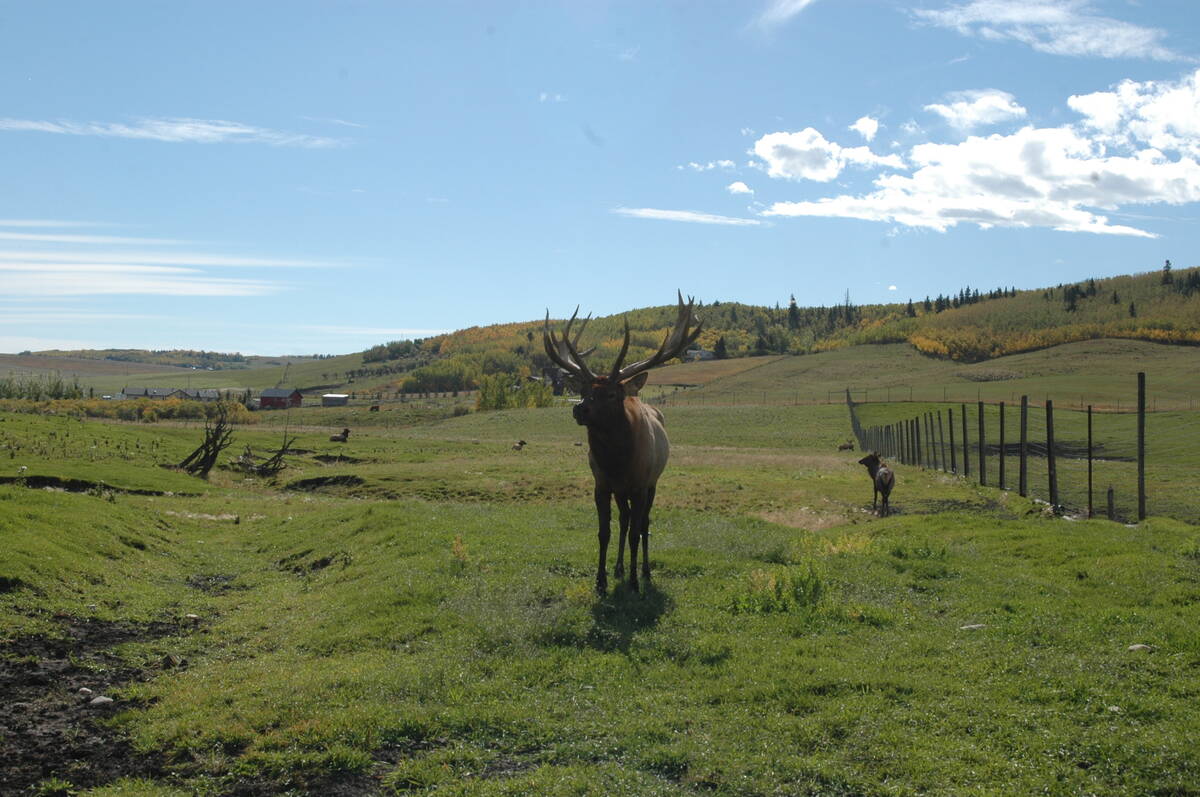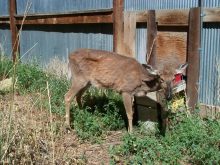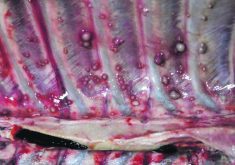The Canadian Food Inspection Agency is looking to update its chronic wasting disease control program for farmed cervids and asking the general public for their thoughts on those changes.
Consultation is open until Oct. 24, with proposed changes moving away from mandatory herd destruction and toward a more regional, management-focused approach to control disease spread.
The CFIA’s current CWD Control Program encourages disease prevention and early detection by focusing response actions on CWD-infected herds that are enrolled in a CWD herd certification program (HCP) and found to be compliant at level D or higher through the CWD HCP compliance evaluation.
Read Also

Saskatchewan project sees intercrop, cover crop benefit
An Indigenous-led Living Lab has been researching regenerative techniques is encouraging producers to consider incorporating intercrops and cover crops with their rotations.
The agency also takes response actions in CWD-infected herds that are not eligible for the CWD compartment response. These include placing a quarantine, tracing of epidemiological links to other cervid herds and conducting confirmatory testing.
The second goal of the current CWD Control Program applies to all CWD-infected farmed cervid herds and aligns with Health Canada’s recommended precautionary approach to keep cervids known to be infected with CWD out of the commercial food supply.
All CWD-exposed cervids (those originating from CWD-infected farms) must be tested for CWD, with negative results, before release of their consumable products into the marketplace.
CWD continues to spread
However, CWD continues to spread within Canada.
The disease is now established in wild cervids in Saskatchewan and much of Alberta, and new cases continue to be detected in cervid farms and in wild cervids in the two provinces.
CWD was also detected in one red deer farm in Quebec in 2018, and since 2021 there have been ongoing detections in wild cervids in Manitoba.
CWD was first detected in British Columbia in wild cervids in January 2024.
It has not been detected in Canadian wild cervid populations in other provinces or territories and has not been detected in wild caribou anywhere in Canada.
Are humans at risk?
To date, there has been no known transmission of CWD to humans and no direct evidence to suggest that CWD may be transmitted to humans.
However, scientific uncertainty remains for zoonotic (animal to human) and cross-species transmission.
Some animal studies suggest CWD prions could infect some types of non-human primates under experimental conditions. Experts continue to study whether this disease has the potential to infect other animals or humans and if so, under what circumstances.
The proposed goals of the new control program are to protect farmed cervid herds and to minimize human exposure to CWD prions.
CWD status varies from region to region
The new proposed CWD Control Program recognizes regional variability in CWD status for the purposes of CWD risk management. It will consider CWD to be established in a province or territory where CWD has been detected in wild and farmed cervids for two or more consecutive years.
The agency considers CWD to be emerging in a province or territory where CWD has been detected in some wild cervid populations for two or more consecutive years, but not in farmed cervids.
The disease will be considered not detected in provinces or territories where CWD has not been detected in wild or farmed cervids in the last five years.
Under the proposed program change, CFIA will consider CWD to be established in Alberta and Saskatchewan, emerging in Manitoba and not detected in the rest of Canada.
In the limited spectrum of tools that exist to control CWD, destruction of infected cervid herds can only be considered as an eradication measure when the disease has not yet become established in the wild cervid population in the vicinity of the farm.
Culling
The proposal says the CFIA will not order destruction of CWD-infected herds in provinces or territories where CWD is established or emerging. The agency will not order destruction of CWD-infected cervid herds in Alberta, Saskatchewan and Manitoba.
It will look to enhance access to information and advice on CWD, scientific and laboratory support and training on live animal testing for partners, producers and other stakeholders across Canada, including in areas where CWD is established or emerging.
The CFIA will continue to offer to work collaboratively with provinces or territories not affected by CWD to carry out eradication measures if the first case is detected in a farmed cervid, on the condition that the relevant provincial or territorial wildlife authority carry out similar eradication measures in wild cervids in the vicinity of the infected farm.
This aggressive response will be undertaken to prevent further spread of CWD into that part of Canada.
Consistent, precautionary testing is key
Under the proposed program change, CFIA will oversee development of a framework to ensure consistent precautionary CWD testing on all farmed cervids from Alberta, Saskatchewan and Manitoba destined for the commercial food supply.
In parts of Canada where CWD is not established or emerging, precautionary testing will continue to be met through current CWD screening tests conducted at provincial laboratories and confirmatory tests conducted at the National CWD Reference Laboratory.
Restrictions on movement of live cervids from CWD-infected herds are currently accomplished under the CFIA’s Cervid Movement Permit policy. Live cervids originating from CWD-infected herds in Canada will continue to be permitted to move only to terminal locations (abattoirs or terminal hunt farms) if allowed by provincial or territorial authorities.
According to 2024 Agriculture Canada data, Canadian producers raised 29,655 farm raised cervids on 402 farms.
For more information, visit inspection.canada.ca/en/about-cfia/transparency/consultations-and-engagement/proposed-changes-chronic-wasting-disease-control-program/overview.
Questions can be emailed to CWD-MDC@inspection.gc.ca.















